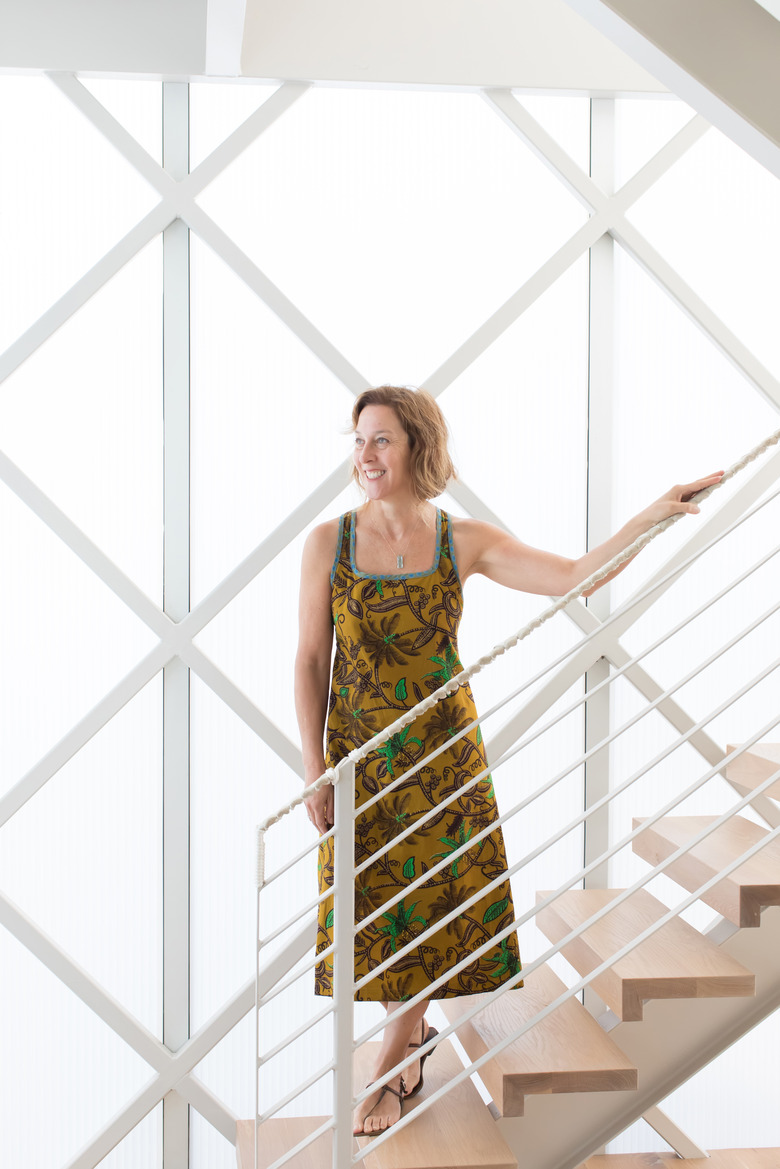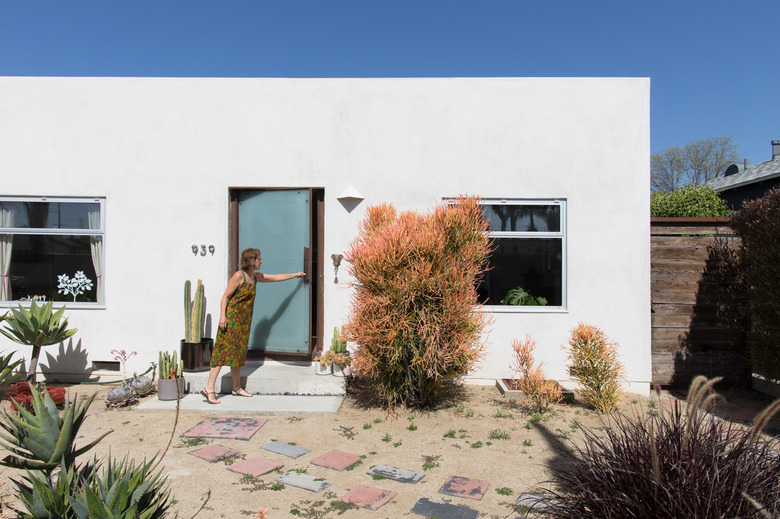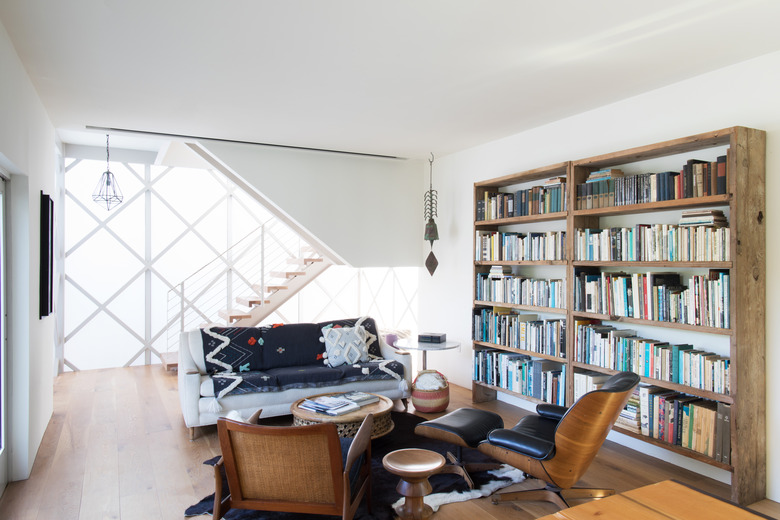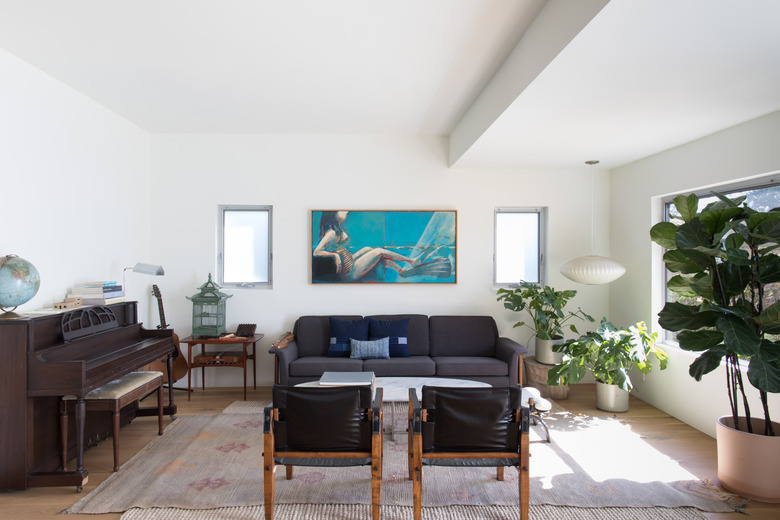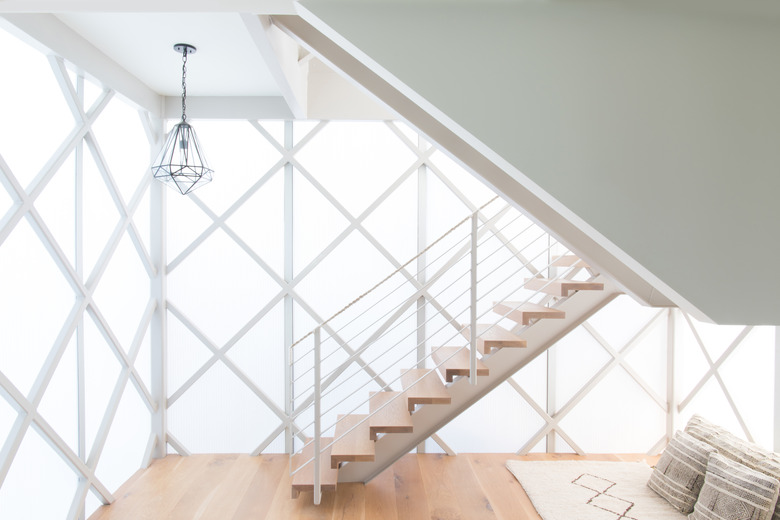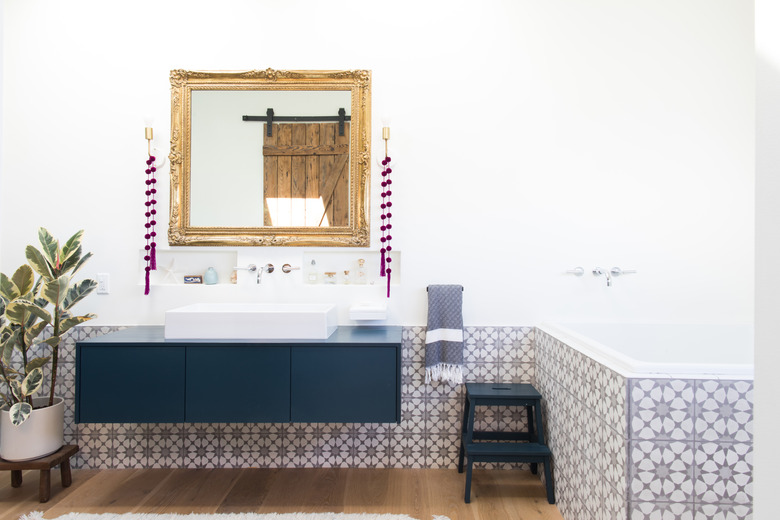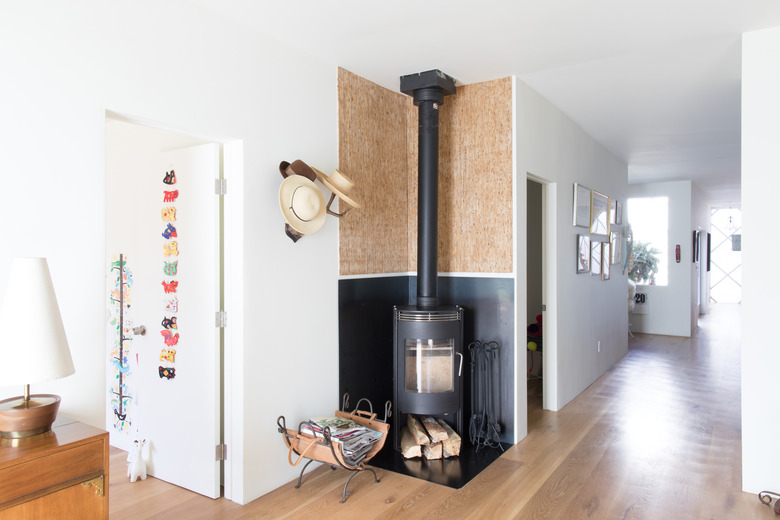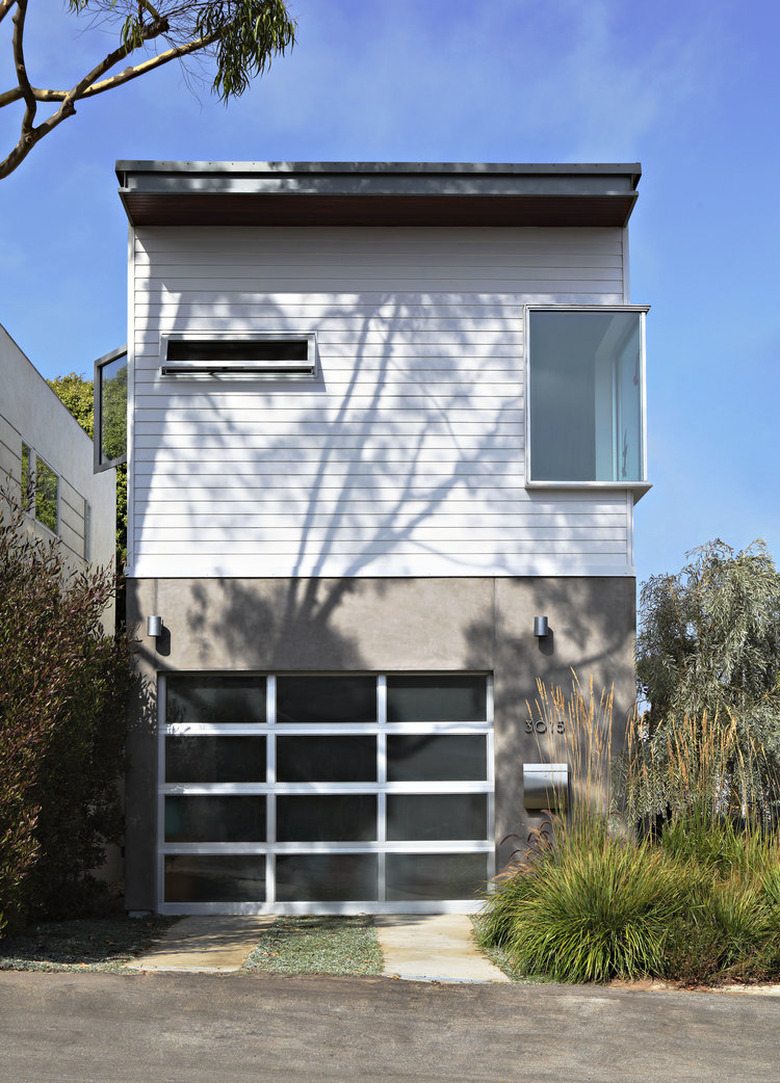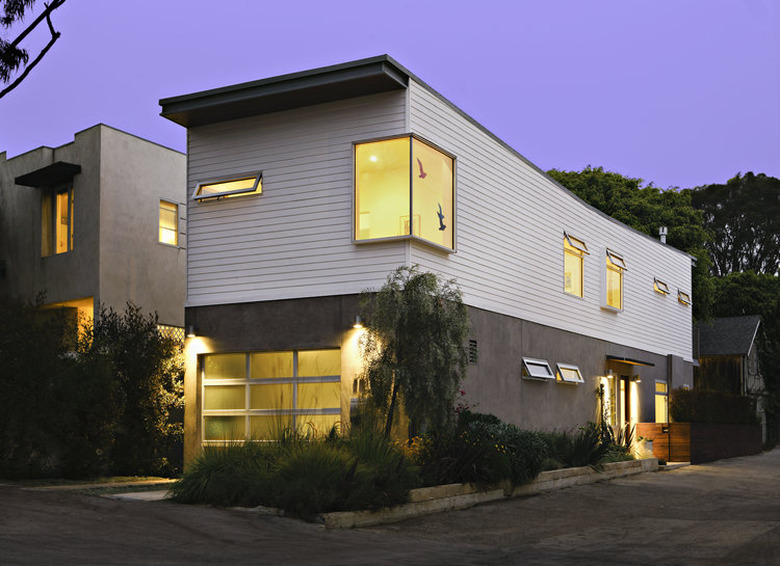The Timing Is Finally Right For Designer Jennifer Siegal To Change The Industry
Designer Jennifer Siegal's sunny office is set atop a detached garage in the backyard of her Los Angeles home. Unlike most properties in the Venice Beach area, its front entrance gives no indication of all that lies beyond an otherwise quaint 1920s Spanish-style bungalow.
But to pass into her domain is to move through a house that fuses old with new, and traditional lines with off-kilter finishes. Modular additions that just about double the square footage of the place appear seamless, while other unconventional materials stand out — like grocery store entrance doors that swing outward. It's hard not to look around and take notes.
But perhaps Siegal's career should've been a strong clue into her private life: simple normalcy was never part of her public works. When she launched her firm Office of Mobile Design in 1998, the notion of moveable houses, the crux of her creations, wasn't as popular as it is now. In fact, it was pretty unpopular.
"The building industry is really antiquated and stuck in its way," said Siegal, in a workspace flushed with warm daylight. "There's something super deep about housing that it's really hard to shake people out of their assumptions."
Siegal has worked traditional properties, and currently lives in one. But to her, homes should have the potential to be as adaptable as the humans who live in them as well.
"I still think housing is the largest untapped business model that hasn't really transformed in forever," she mused.
Siegal is not interested in creating someone's version of a utopic city and is skeptical of the type of building that can dictate the way millions of people live. According to her, massive urban design is not the type of human response that she's drawn to.
"I like the idea that you can come in and insert pieces into the existing fabric," she continued. "My approach to prefabrication and modularity has always been about finding opportunity within an existing context."
She sees opportunity for this change in many forms, like all of those city-owned empty lots dotted around L.A. that could potentially become usable green space or even modular housing. Well, if only public outcry increased and laws were eventually changed, she said.
"What I struggle with is the permanence of land ownership more than anything," she said. "I would like to see the disintegration of building and ground needing each other in order to create the valuation."
Siegal's concept for change goes like this: if a building could be moved off the land but keep its value — therefore seeing the land and the property as two separate distinctions — then this would create a more fluid style of architecture.
"I would like to see buildings that truly dislodge from the ground, and you can take them with you," she said. "Not in the way that an R.V. travels with you, but in a more semi-permanent way."
Trailer parks are an example. They sprouted up throughout the U.S. around the middle of the 20th century during a post-war affordable housing shortage — land that was too hilly, rocky, or anything but flat was disregarded as inefficient. And after the recent 2008 recession, their popularity as a quick solution surged again.
As it turns out, trailer parks are more valuable than meets the eye. Those who own or rent a trailer must lease the land from the landholder, and then the person who owns the land pays the taxes. That's a straightforward and economical alternative to single-family homes, which "have among the highest median rents of any type of rental housing," according to a report from Harvard's Joint Center for Housing.
Siegal thinks that more trailer park zoning would "just make it easier to add and subtract," she said, in terms of who owns what. For her, the challenge is how to create more trailer park-type models in order to reclaim usable land. Plus, smaller lots would be better for the environment, she said.
But like most things, rogue ideas take time to become popular, if they do at all. When she first started discussing her efficient, environmentally-friendly, and nimble ideas two decades ago, it was not easy to get listeners. Now, "tiny homes" are mainstream — even inspiring some television shows — and the world's first 3D-printed livable home was created earlier this year. More and more people are viewing housing not as a fixed entity but as an evolving piece of identity.
But changing things on a governmental level is different.
Siegal currently teaches at USC, where she's introduced the idea of separating land from building value with a colleague in the economics department. That friend is toying with the idea of introducing this research at the federal level. It's something she had considered long before realizing an economist would be interested in this work.
"I used to really want to be in politics," she noted. "Before I went into architecture, I was fascinated by politics, and I still am very much committed to the political discourse. I just do it through architecture."
One way the argument is being framed is by looking at the climate. According to the U.S. Geological Survey, one of the most powerful El Niño climate events of the last 145 years was documented last winter. Researchers examined 29 beaches along the West Coast, from Washington to Southern California, and found that winter beach erosion was 76 percent above normal, by far the highest ever recorded. Most beaches in California eroded beyond historical extremes due to drought.
If severe events like this one become more common in the future, as studies suggest, a region that's home to more than 25 million people will become more and more vulnerable to coastal hazards. Cliff erosion, beach erosion, and flooding may occur independently of projected sea level rise.
But if structures are easily detached from the land and transported, according to Siegal, then there is less need to invest our tax money into the infrastructure by creating levies and dams at the ground level.
To make the idea seem a little less futuristic, Siegal gives a short history lesson. Mobile architecture reiterates the type of nomadic society that moved at the threat of war, famine, or drought, she said. People moved their wagon to a different piece of land whenever it was necessary because the land was not owned like it is today or viewed with such high values.
She's currently in the development phase for off-the-grid moveable homes, which will initially be targeted to a luxury market that can afford a higher level of investment. This will help her "figure out all the kinks" before introducing the properties to a larger audience, she noted.
"I think you have to put your money where your mouth is," Siegal said. "That's always been my driving passion is to actually try to manifest my ideas and try to create, and that's what's propelled me along."
Siegal is the winner of the 2016 arcVision Prize, Women and Architecture, an international award organized by Italcementi.
